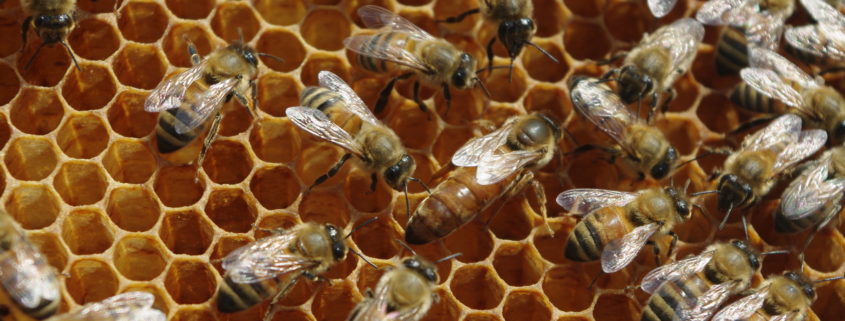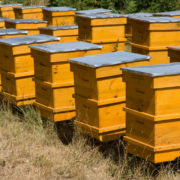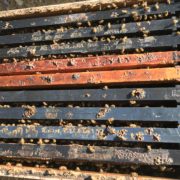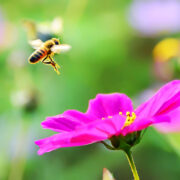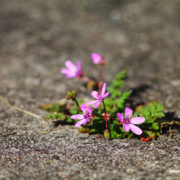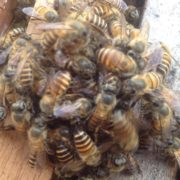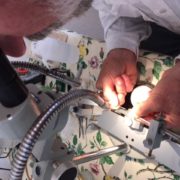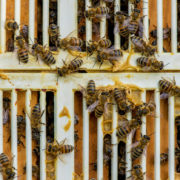How Does a Bee Become a Queen Bee?
When we raise queens here at Wildflower Meadows, we start the process by grafting worker larvae from our breeder queens. This procedure transfers the genetic material from our champion breeder queens to our cell building colonies, that will raise the queens which we sell year-round.
Did you happen to catch the words “worker larvae?” Isn’t it strange that the same larvae that were once destined to become worker bees, can be redirected into becoming queen bees? An individual fertilized larva contains the genetic material to become either a worker bee or a queen bee. What happens is that the bees themselves do a sort of genetic modification to the larva, depending on their desired outcome.
When we place these worker larvae into one of our powerful cell-building colonies, the colonies are already strong and queenless. They have a high motivation to develop queens. So, how does a beehive change the course of development of worker larvae to become queen larvae when all the larvae originates from the same source?
Scientists and beekeepers have been asking this question for ages. An obvious clue to the answer lies in the different diets of these two types of honeybees. Queen bee larvae are fed royal jelly, whereas worker bee larvae are fed worker jelly. There seems to be no other variable to explain the change in development. Yet, how does diet trigger certain genes to be activated?
For many years, scientists and beekeepers have assumed that because a queen larva is fed royal jelly, the trigger to queen development must lie within the royal jelly itself. In fact, most scientists always assumed that there was some magical ingredient within royal jelly that initiates the genetic modification, triggering fertility, and queueing the development of ovaries, etc.
We now know that this is not entirely true.
While it is certainly diet that determines a larva’s development, scientists have discovered there’s no magical ingredient in royal jelly which triggers queen development. It’s actually the diet of the workers that is suppressing queen development!
Worker bee jelly, unlike royal jelly, contains pollen and honey. Pollen and honey, being directly derived from plants, contain plant materials known as phenolic acids, or flavonoids. These phenolic acids deactivate the genes responsible for developing ovaries and reproductive systems. In other words, these phenolic acids suppress queen development in workers.
Royal jelly, on the other hand, is entirely a secretion of bees. It is a pure bee product that does not contain any plant product – it is completely, 100%, devoid of phenolic acids. The absence of phenolic acids allows a queen bee to fully activate her reproductive genes and completely develop her robust reproductive system.
How efficient is it that honeybees have developed such an amazing way of raising two very different types of bees from the same source? Think of how much more complicated a beehive would be if the bees required different genetic larvae for both workers and queens. By performing this genetic modification on the same source, honeybees have developed an elegant solution for raising queen bees on demand!

